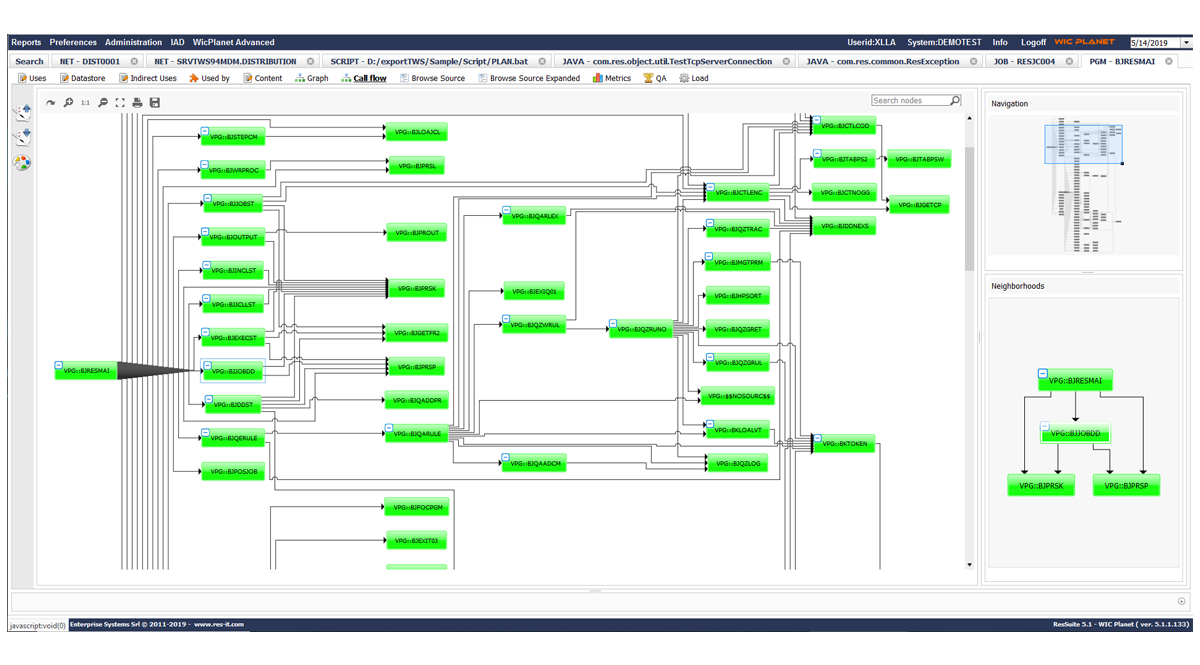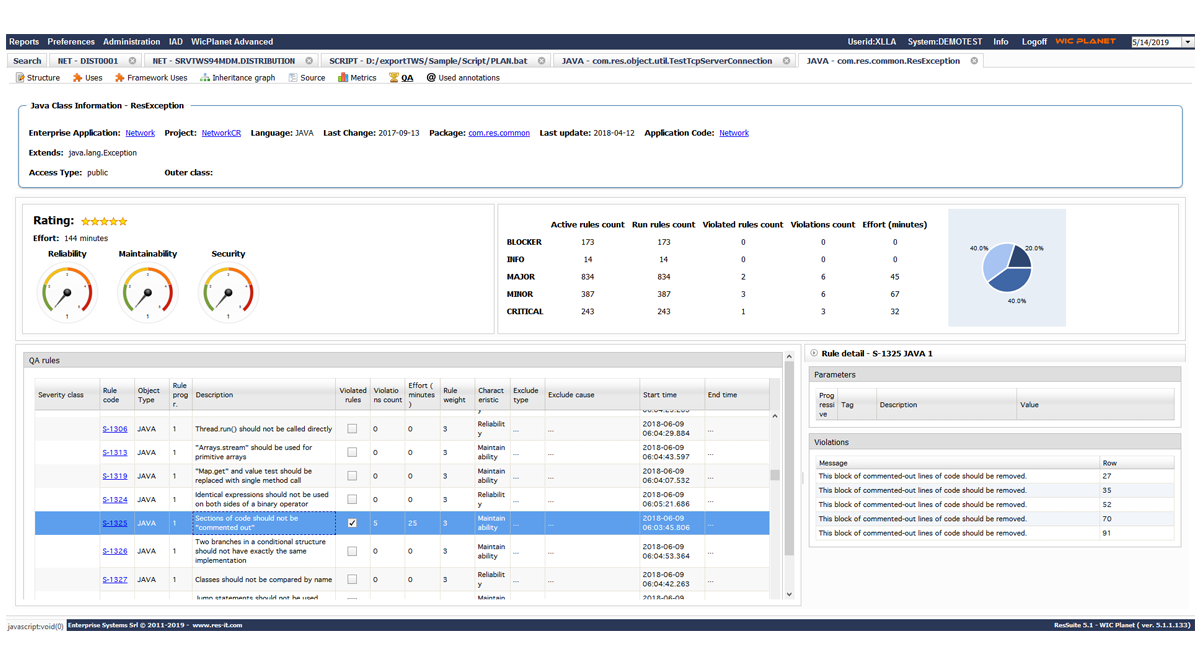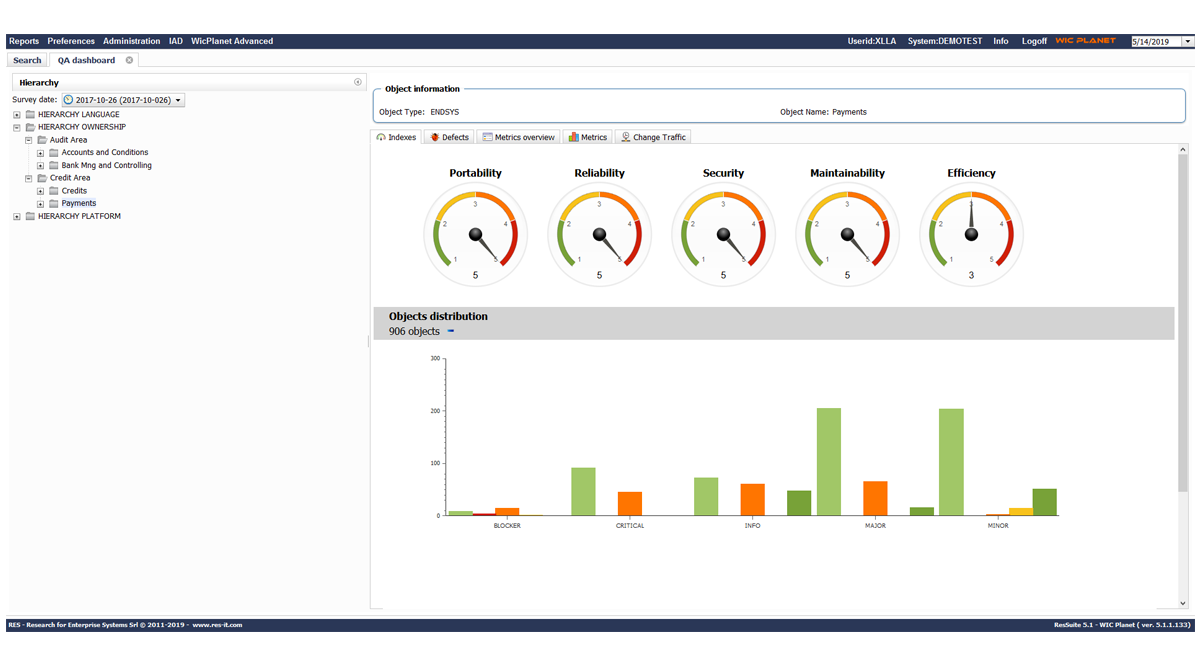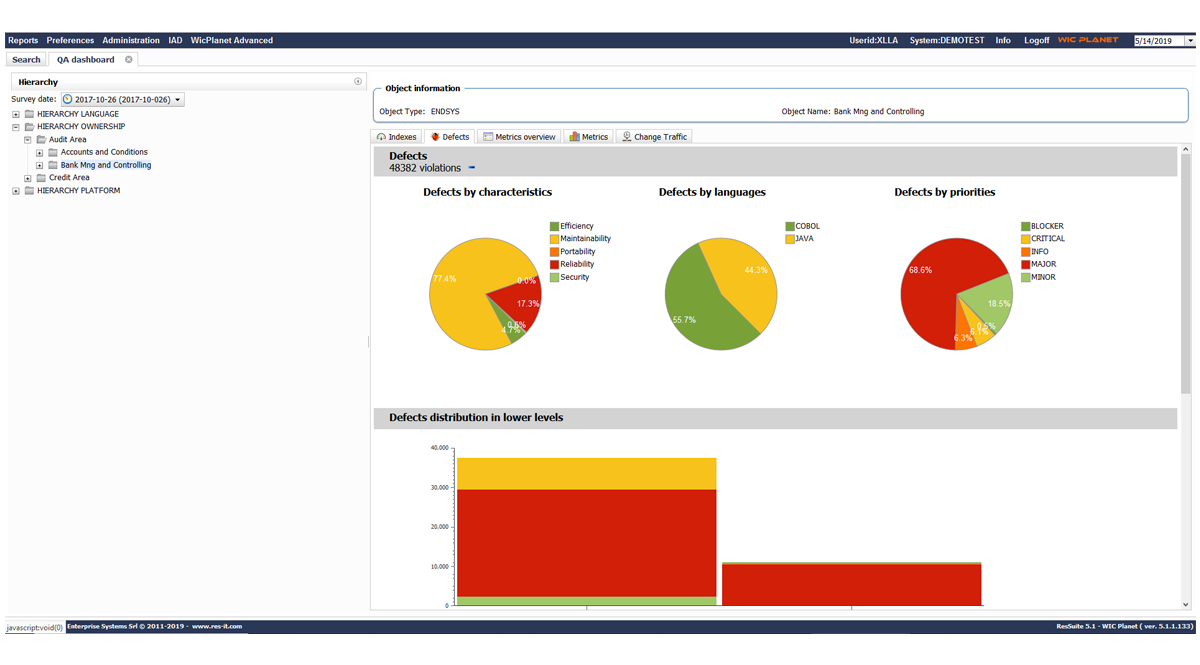DOCET / EV
In a world which requires an ever more rapid evolution of information systems, where it is necessary to satisfy virtually every business requirement, the various complexities, variety, connections of software components and infrastructure, etc., makes it increasingly difficult to efficiently manage applications, resulting in the risk of a significant loss of efficiency (time-to- market becomes overly excessive, a continuing deterioration in performance, a continuing increase in operating costs…). Docet/EV provides an optimal and integrated method for addressing the needs of:
- A comprehensive understanding of client information systems at all levels, from a high level down to the most intimate detail, with particular focus on the interconnections between applications
- Application(s) assessment (corporate standards and best practices), through KPI indicators, along with a complete quality optimization and efficiency review and reporting of the software through a tools-based automated systems analysis, documentation and analysis/assessment process.
THE DOCET/EV SOLUTION
Docet /EV makes it possible for the user to catalog and document, within a single relational database, software objects that make up the applications, including legacy, open systems and web. This is accomplished through an automated detailed analysis of the source components and relationships.
The information collected is accessible using WIC Planet, the web interface of Docet/ EV that generates graphical views of objects- relationships (even from different applications or platforms).
It is also possible to access the relational database via simple custom queries.
The information collected may be shared among the various internal corporate IT responsibilities:
- I.T. management, which generally requires a high-level view
- Application development, which requires technical and functional information about the components and data
- Operations and production control, which has the need to better govern the infrastructure components and batch processes.




OBJECTIVES AND FUNCTIONALITY OF DOCET/EV
Docet/EV includes processes which run on a variety of different platforms (LINUX, UNIX, WINDOWS, z/OS), which are able to do in-depth analysis of the application code, to provide not only mapping and detailed documentation of the software components, but also the various relationships between them.
Based on a sophisticated model, which includes configuration support for all major market frameworks, it is possible to trace both the flow of end-to-end transactions and the structures of batch applications, included is a feature that can identify the connection points between the systems, such as data access, all from different perspectives (functional, technological, for line of business…)
Docet/EV also makes it possible to automatically locate the points of impact of mass changes, with the aim of supporting applications structural change requirements along with simultaneously identifying any “obsolete” system objects.
Docet/EV then provides a detailed measurement of the software in accordance with the established international standards.
The metrics and KPIs, available for a variety of objects (JAVA, COBOL, PL/I, jobs…) provide the assessment indexes both at the individual object level and for entire applications and systems. The measurements are maintained in the product relational database, allowing analysis of trends and assessments of deviation which can indicate any that are stated or agreed, for example, in terms of SLAs with suppliers or development groups
Lastly, Docet/EV includes a rules-driven analysis engine that allows the user to easily verify or force the adoption of best practices in coding software in the various areas of delivery and through easily integrated processes with change management systems or trouble ticket systems.
BENEFITS
- Reduction in the time and effort required to create documentation of the application and of related objects
- Improved understanding of relationships and links between application components (even if they reside on different platforms)
- Reduction of errors due to lack of knowledge of the applications
- Immediacy, accuracy and completeness in the impact analysis activities
- Simpler analysis of software that is developed or modified by outside suppliers (quality control, adherence to standards, assessment of the complexity…)
- Automatic and detailed monitoring of compliance with quality standards in writing the software
- Automatic and detailed monitoring of compliance with quality standards in writing the software
- Assessment of the costs of outsourcing and application maintenance to determine the scope of what is being outsourced or maintained and to verify the delivered results
- Understanding of organizational impacts introduced by a particular application or new features
- Identification of potential weaknesses in the client’s information systems
- Quantification and evaluation of the commitments of the development groups




